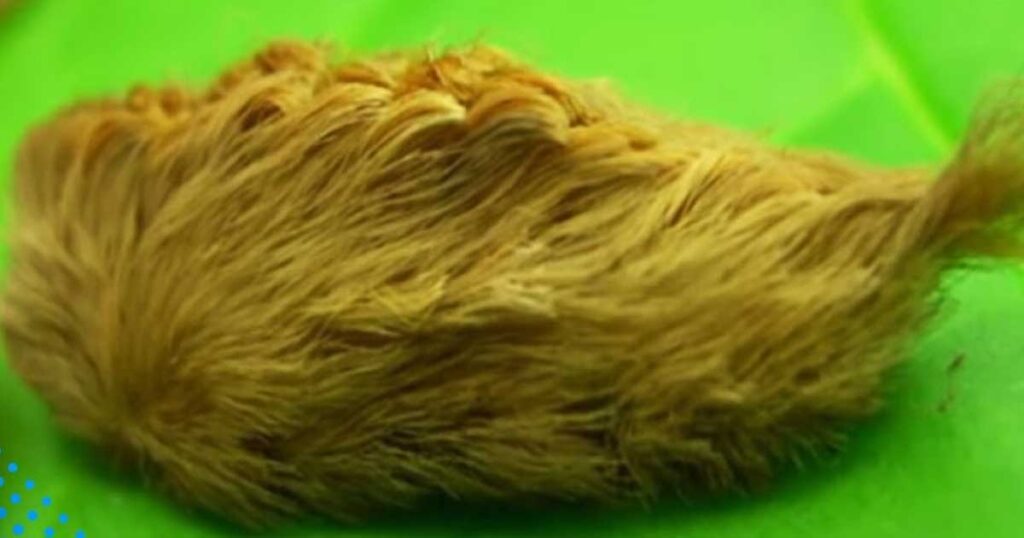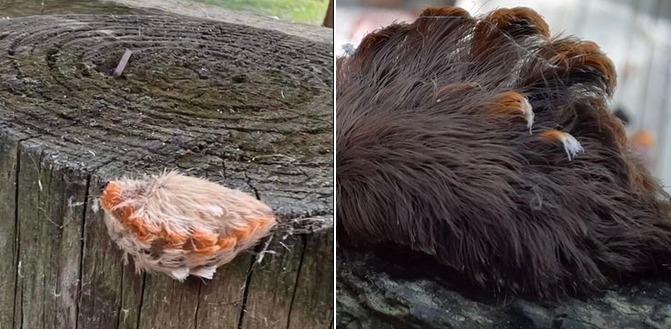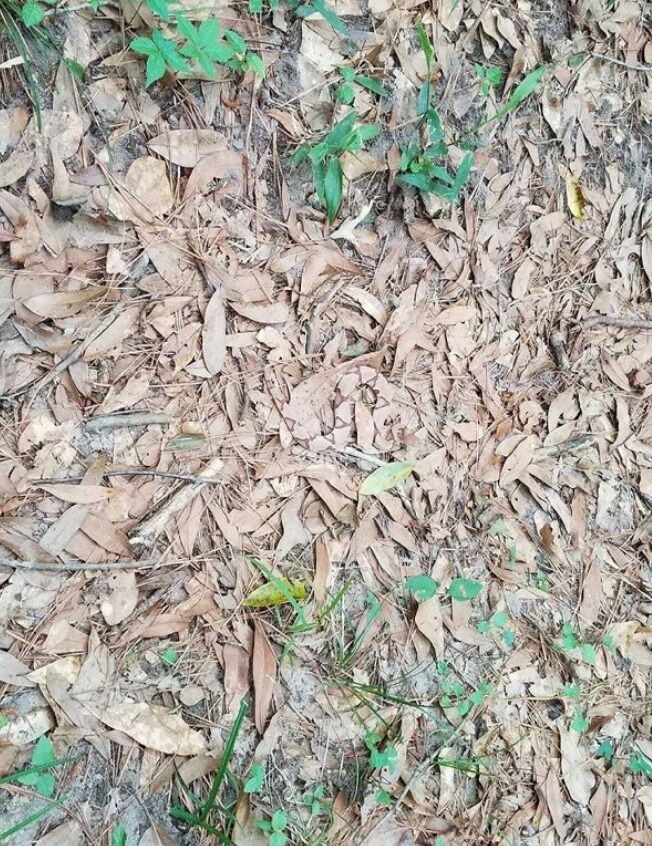
As we spend time in nature, it’s important to be cautious of the creatures we encounter. While most animals don’t pose a threat to us, there are some exceptions. Leslie Howe, a vigilant mom from Gwinnett County, Georgia, learned this the hard way when she spotted a peculiar “fur ball” near her children at a local playground.

At first glance, the furry creature seemed harmless. But Leslie’s instincts told her otherwise. She trusted her gut and kept her children away from it. And it turned out to be the right decision.
Later, Leslie discovered that the innocent-looking “fur ball” was actually a puss caterpillar. This caterpillar may appear harmless, but it is covered in hair that disguises toxic bristles. The caterpillar’s poison can be injected, making it dangerous. Leslie hopes that her story will serve as a warning to other parents about the potential danger of this caterpillar.
The Puss Caterpillar: A Hidden Danger
The puss caterpillar is a type of larva found in various parts of the United States, particularly states between New Jersey and Florida, and as far west as Texas. These larvae grow to a bit over an inch in length and feed on foliage. It’s crucial to avoid touching them, as their sting is excruciatingly painful and can result in the caterpillar sticking to your skin and injecting venom.

The pain caused by a puss caterpillar sting can be compared to that of a wasp sting, but often worse. In some cases, it can even cause pain in the bones. The severity of the pain depends on where the caterpillar stings and how many bristles embed into the skin.
Eric Day, the manager of Virginia Tech’s Insect ID Lab, experienced the painful sting of the puss caterpillar himself. While mowing his lawn, he accidentally brushed against a tree and suffered from a burning sensation that lasted for a day or two. He even had a visible blister and irritated area for several weeks.
In case of a puss caterpillar sting, it is recommended to remove the venomous hairs using tape and clean the affected area with soap and water. To alleviate itching, you can use hydrocortisone cream or baking soda. If the situation worsens, seeking medical assistance is advised. Although puss caterpillar stings are not usually fatal, in some cases, they can cause a severe allergic reaction called anaphylaxis, which can be life-threatening.
Spread Awareness!
Let’s make sure our friends and family are aware of the potential danger posed by the puss caterpillar. Share this article with them to keep everyone safe in nature!





